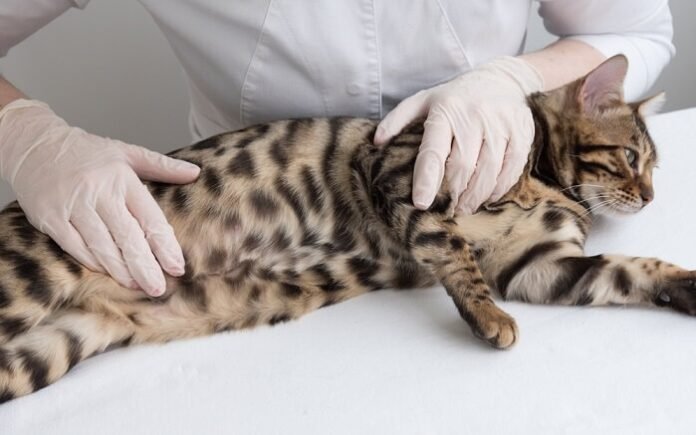When caring for our cats, knowing what parasites they can contract and what you can do to prevent this from happening is essential.
What Are The Most Common External Cat Parasites?
Fleas
Fleas are external parasite that depends upon a host animal for survival, in this case, your cat. Once one of these troublesome critters lands on your kitty, they can make themselves at home and multiply at an alarming rate.
Not only that, but if your pet has fleas, there is a good chance that they are also invading your home, hiding in carpets and soft furnishings.
Ticks
Ticks are external parasites that rely on hosts for transportation and food. Tick feed on the blood of their hosts, including humans and animals.
Wild animals are commonly responsible for bringing ticks into backyards where pets can easily pick them up and bring them into the house.
Ticks are large enough to be noticed when running your hands over your cat when checking for bumps and irritation. They are usually found on the head, neck, ears, and legs.
Mites
Mites are tiny spider-like parasites on a cat’s skin or ear canals. They can cause substantial irritation, skin diseases as well as bacterial infections. The most common mite found in cats is the ear mite, generally found in the ear canal but can also live in other areas of the body.
The most common sign of mites in cats is constant scratching, head-shaking, licking, or biting, all of which can lead to wounds, scabs, inflammation, and hair loss.
Anti-parasite treatments, monitoring, and regular grooming are the best way to prevent mites in your cat.
Internal Parasites Of Cats?
Many internal parasites, including roundworm, tapeworm, heartworm, and hookworm, can make your cat sick.
Roundworm
Roundworms are a common parasite in cats. Kittens generally become infected with roundworms through nursing and can catch this roundworm by eating the larvae found in the faeces of infected animals.
The most common signs of roundworms are diarrhoea, lethargy, weight loss, and some vomiting. There may be no signs of infection in cats with few worms, but you may notice them in the stool or vomit.
Read More: Rabies in Cats
Tapeworm
These are flat, long, segmented parasites that attach to the walls of the small intestine. Cats are most commonly infected by the Dipylidium canine species, but several types are known to infect pets.
Cats only become infected after swallowing a flea that has been infected with the tapeworm. This generally happens through grooming or as a response to flea bites. Humans are highly unlikely to be infected by tapeworms.
The best way to prevent tapeworm infection in cats is through flea control treatments, especially in cats with outdoor access.
Heartworm
Heartworms, or Dirofilaria immitis, are protozoan parasites in the heart and surrounding blood vessels. Cats are generally more resistant to heartworm infection than dogs. However, the condition may still happen.
This disease is transmitted by infected mosquito bites when eggs are injected into the pet; the larvae travel through the bloodstream for several months, settling in the heart and pulmonary arteries.
Heartworm infection may not show any symptoms in cats until its later stages. The most common visible signs are rapid breathing and coughing attacks, with some vomiting, loss of appetite, and weight loss.
Hookworm
Hookworm eggs can infect cats by either being ingested (commonly when grooming their paws), burrowing through the skin, or eating prey that has been infected. Kittens may also become infected via their mother’s milk.
The most common signs of hookworm infection in cats are anaemia, weight loss, diarrhoea, poor hair coat, and faecal blood.
Regular use of parasite preventives is recommended for cats at risk, along with periodic deworming, daily litterbox cleaning, and good hygiene.




















